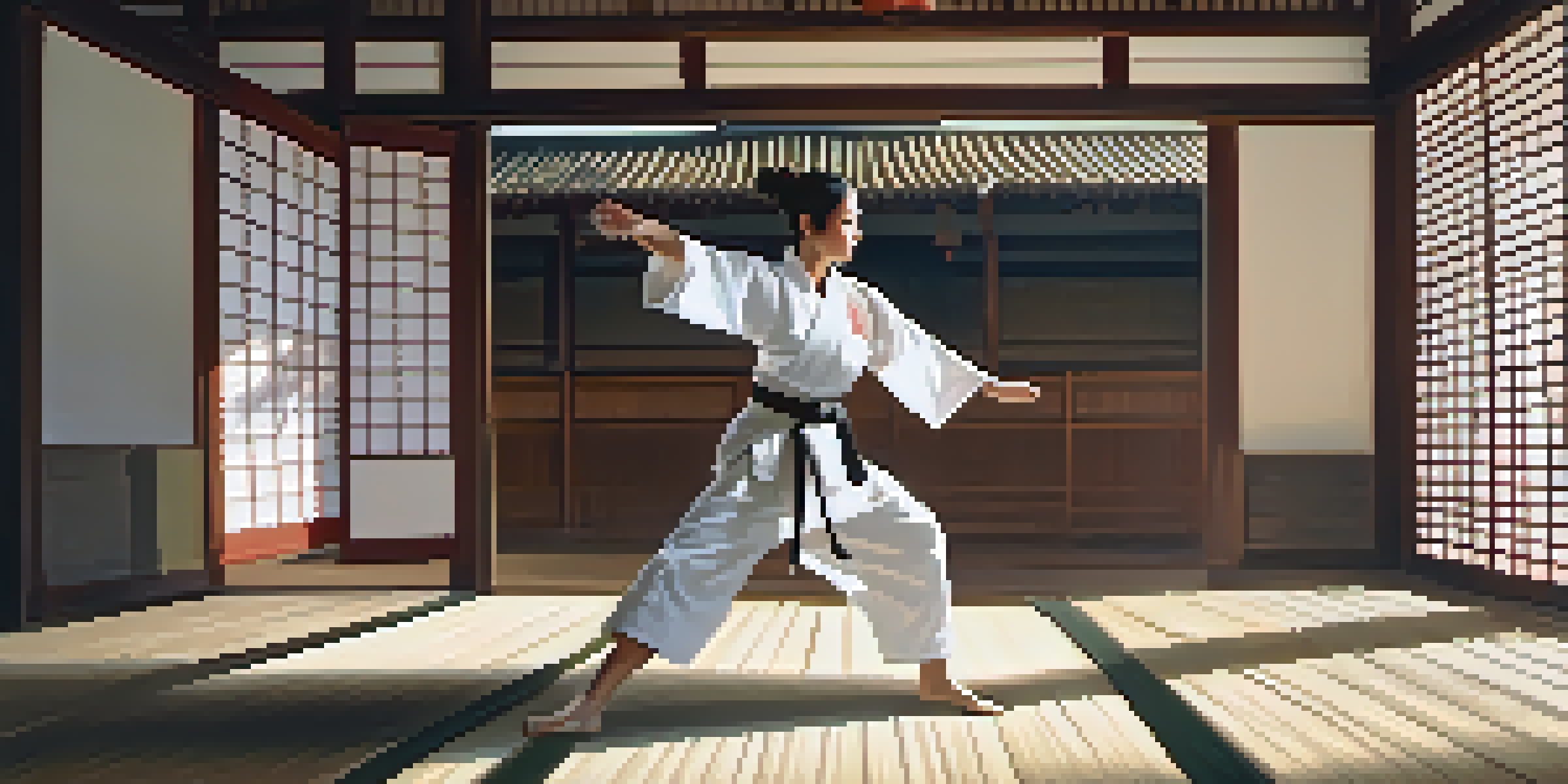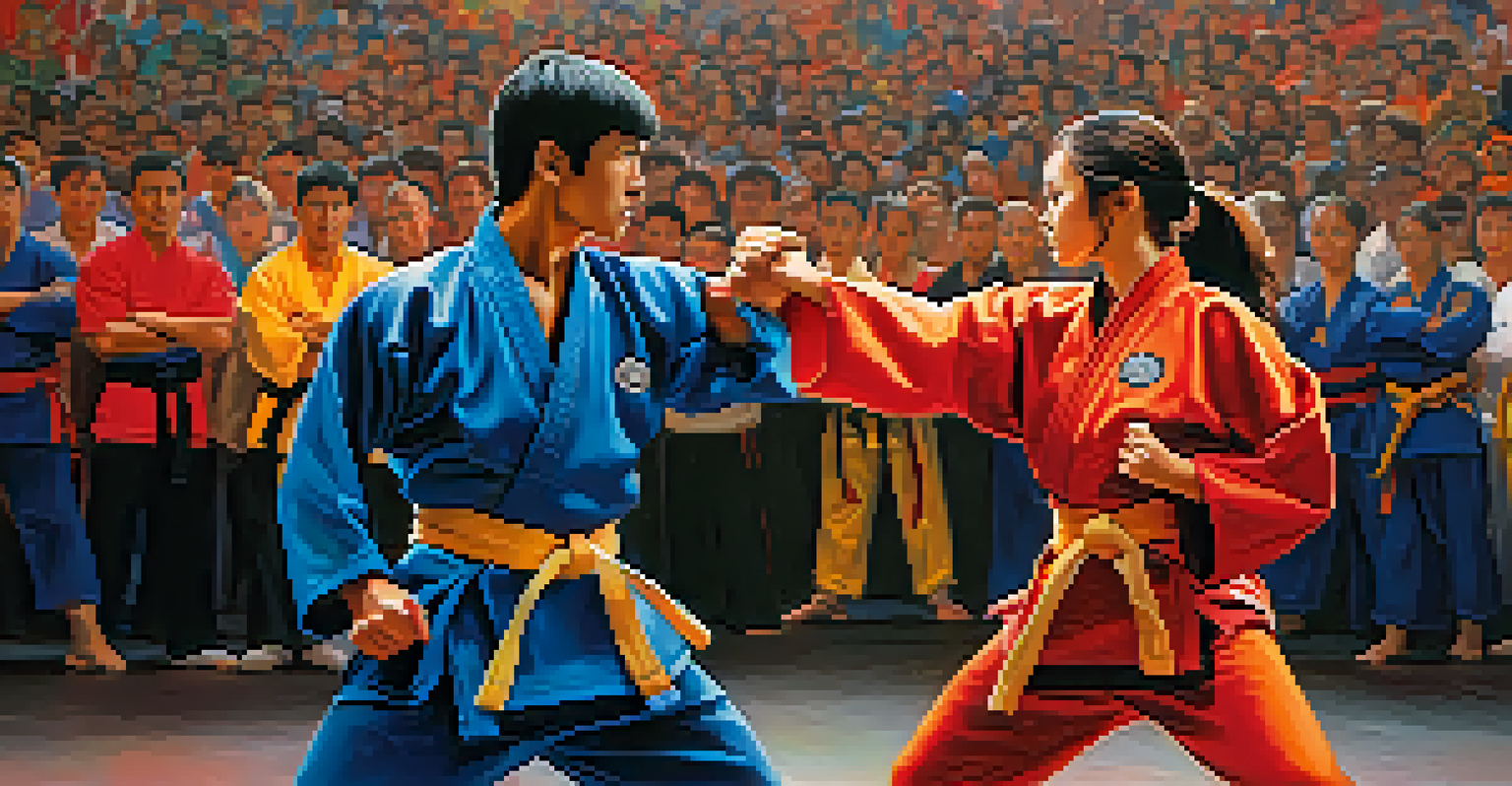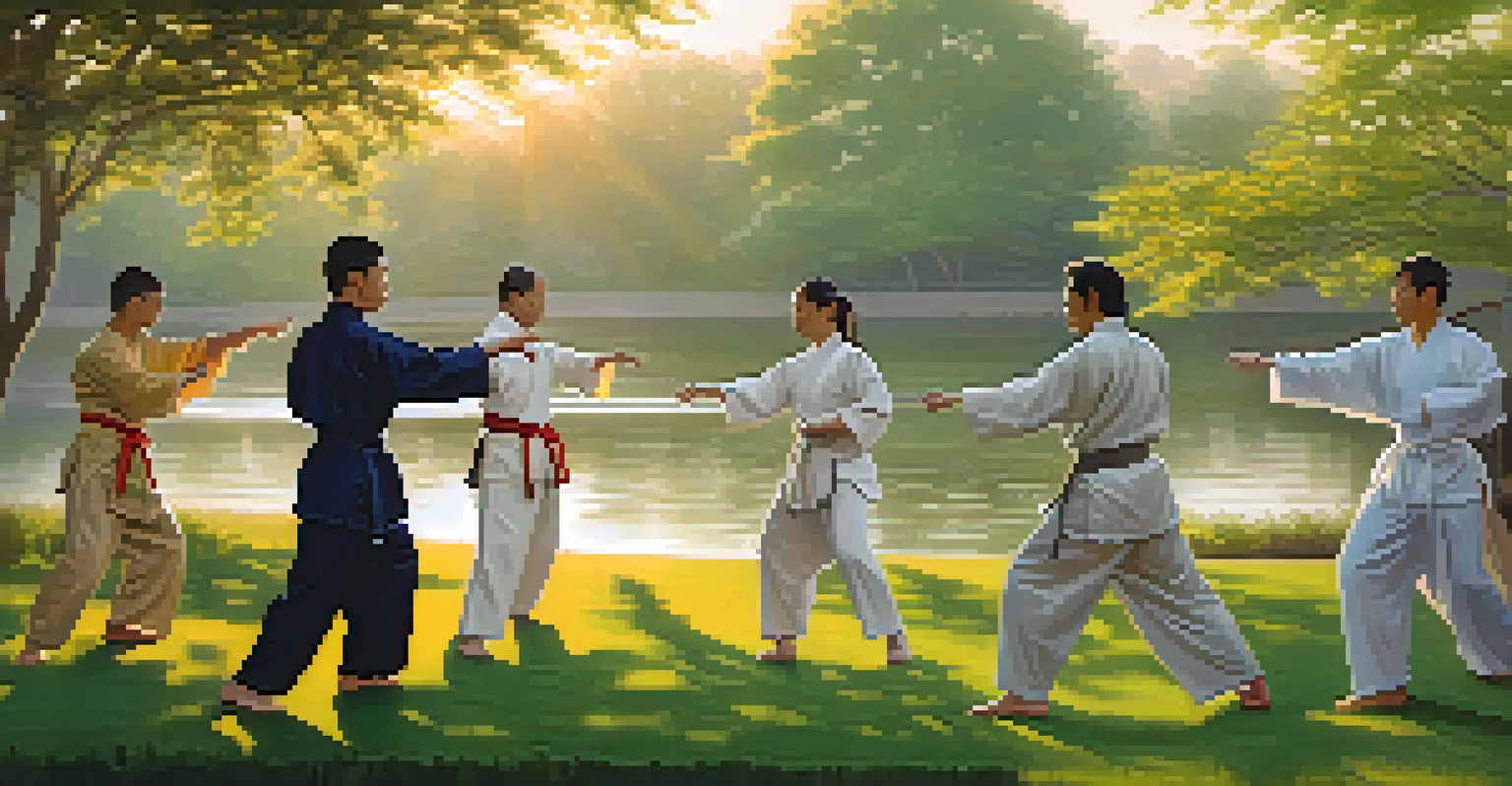Martial Arts and Gender Representation in Popular Media Today

The Evolution of Gender Roles in Martial Arts Media
Historically, martial arts media has often depicted males as the primary heroes, showcasing their strength and skill. However, over the years, we’ve seen a shift in this narrative, where female characters are increasingly taking center stage. This evolution reflects broader societal changes regarding gender equality, challenging traditional stereotypes and norms.
Feminism is the radical notion that women are human beings.
Consider iconic films like 'Kill Bill' featuring Uma Thurman as the vengeful Bride, who embodies both power and vulnerability. Such portrayals provide a refreshing counterpoint to the archetypal male warrior, emphasizing that strength isn't defined by gender. As audiences embrace these diverse representations, the demand for more nuanced characters continues to grow.
Moreover, this shifting dynamic in martial arts media not only empowers women but also encourages men to re-evaluate their perceptions of masculinity. As we explore these evolving roles, it becomes clear that the martial arts genre is becoming a significant platform for discussing gender representation.
Impact of Feminism on Martial Arts Portrayals
Feminism has played a crucial role in reshaping how women are represented in martial arts media. The rise of feminist movements has pushed for stories that highlight women's capabilities, strength, and agency. This cultural shift has resulted in characters who are not just sidekicks but complex protagonists in their own right.

Take 'Wonder Woman,' for example, which showcases not only physical prowess but also emotional depth and moral conviction. This film has inspired a generation of viewers, proving that female-led narratives in martial arts can be both commercially successful and critically acclaimed. This shift in portrayal emphasizes that women are just as capable of being heroes.
Evolution of Gender Roles
Martial arts media has shifted from male-centric heroes to featuring strong female characters, reflecting broader societal changes in gender equality.
As a result, the martial arts genre is increasingly becoming a space for women to express their strength and resilience. By highlighting female fighters, media creators can challenge societal norms and inspire future generations to break free from traditional gender roles.
Diverse Representation Beyond Gender
While gender representation is vital, it’s essential to recognize the importance of diversity in martial arts media. This genre has the potential to showcase a wide array of cultural backgrounds, identities, and experiences. By doing so, it can reflect the rich tapestry of the world we live in, fostering greater acceptance and understanding.
You can’t be brave if you’ve only had wonderful things happen to you.
Films like 'Crazy Rich Asians' and 'Mulan' not only feature strong female leads but also delve into cultural narratives that resonate with diverse audiences. These stories provide an opportunity to explore how different cultures approach martial arts, offering a more holistic view of what it means to be a fighter. By broadening the narrative scope, creators can connect with a wider audience.
Ultimately, diverse representation in martial arts media serves to empower individuals from all walks of life. It emphasizes that strength and heroism can come from anyone, regardless of gender or background.
The Role of Social Media in Shaping Perceptions
In today's digital age, social media significantly influences how martial arts are perceived and represented. Platforms like Instagram and TikTok provide a space for martial artists to share their skills, stories, and experiences, often challenging traditional norms. This democratization of content allows for a broader range of voices to be heard.
For instance, many female martial artists use social media to showcase their training and achievements, inspiring others to pursue their passions. These platforms create a sense of community, where individuals can find support and motivation, breaking down barriers that may have once existed in traditional media representations. This shift encourages a more inclusive narrative around martial arts.
Feminism's Impact on Representation
Feminist movements have led to more nuanced portrayals of women in martial arts, showcasing them as complex protagonists rather than mere sidekicks.
As social media continues to grow, it will undoubtedly play a crucial role in shaping future representations of gender in martial arts. By amplifying diverse voices, we can expect to see an even richer portrayal of what it means to be a martial artist today.
Challenges in Achieving Balanced Representation
Despite the progress made, achieving balanced representation in martial arts media remains a challenge. Many productions still prioritize male characters, often relegating female characters to supporting roles. This imbalance can perpetuate outdated stereotypes and limit audience perceptions of who can be a martial artist.
Moreover, the portrayal of female characters sometimes leans into hypersexualization, which detracts from their strength and capabilities. This trend can send mixed messages about women's roles in martial arts, reducing them to mere eye candy instead of highlighting their skills and achievements. Addressing these issues is essential for fostering a more accurate representation.
To combat these challenges, it's crucial for creators, producers, and audiences alike to advocate for more authentic narratives. By demanding stories that treat all characters with respect and depth, we can foster a more inclusive environment within martial arts media.
Martial Arts as a Tool for Empowerment
Martial arts is not just a physical discipline; it serves as a powerful tool for empowerment. For many individuals, especially women, training in martial arts can build confidence, resilience, and a sense of community. These benefits are often highlighted in media portrayals, showcasing characters who overcome personal struggles through their martial arts journey.
Films such as 'The Karate Kid' illustrate how martial arts can help individuals find their strength and identity. The transformative journey of the protagonist encourages viewers to embrace their challenges and strive for personal growth. Such narratives resonate deeply, promoting martial arts as a means of self-discovery and empowerment.
Diversity Beyond Gender
The martial arts genre is increasingly highlighting diverse cultural backgrounds, fostering acceptance and understanding through varied narratives.
By emphasizing the empowering aspects of martial arts, media can inspire audiences to engage with these practices in their own lives. This focus on personal growth and resilience can lead to a broader appreciation for martial arts as a discipline that transcends gender.
Future Trends in Martial Arts Media Representation
Looking ahead, the future of martial arts media representation appears promising. As audiences demand more diverse and authentic stories, creators are responding with innovative narratives that challenge outdated norms. This trend indicates a growing recognition of the importance of inclusivity in storytelling.
We can anticipate more female-led action films and series that portray complex characters navigating their journeys within the martial arts world. The success of recent hits demonstrates that there is a substantial audience eager for these types of stories. This shift not only benefits female representation but also enriches the genre as a whole.

As we move forward, it’s essential for creators to continue pushing boundaries and exploring new narratives. By embracing diverse perspectives, martial arts media can pave the way for a more inclusive and representative future.